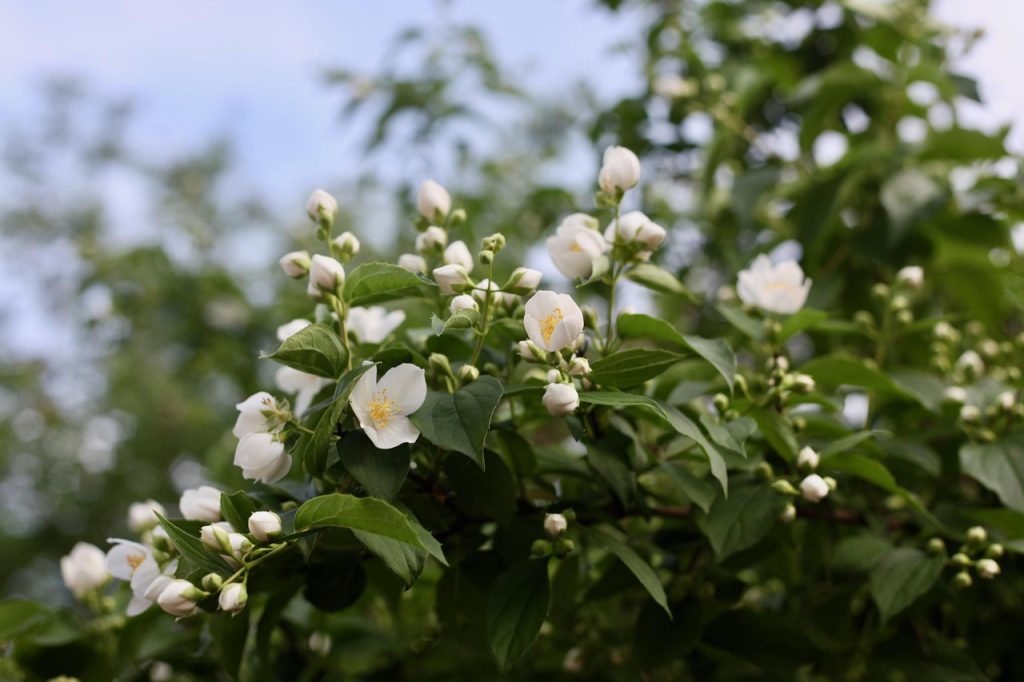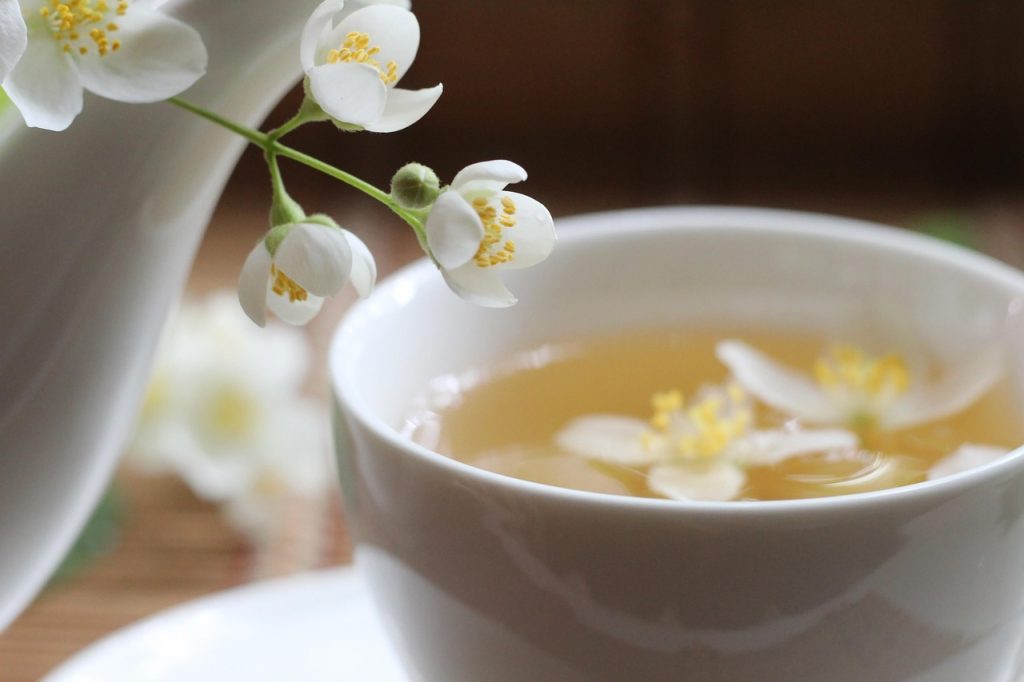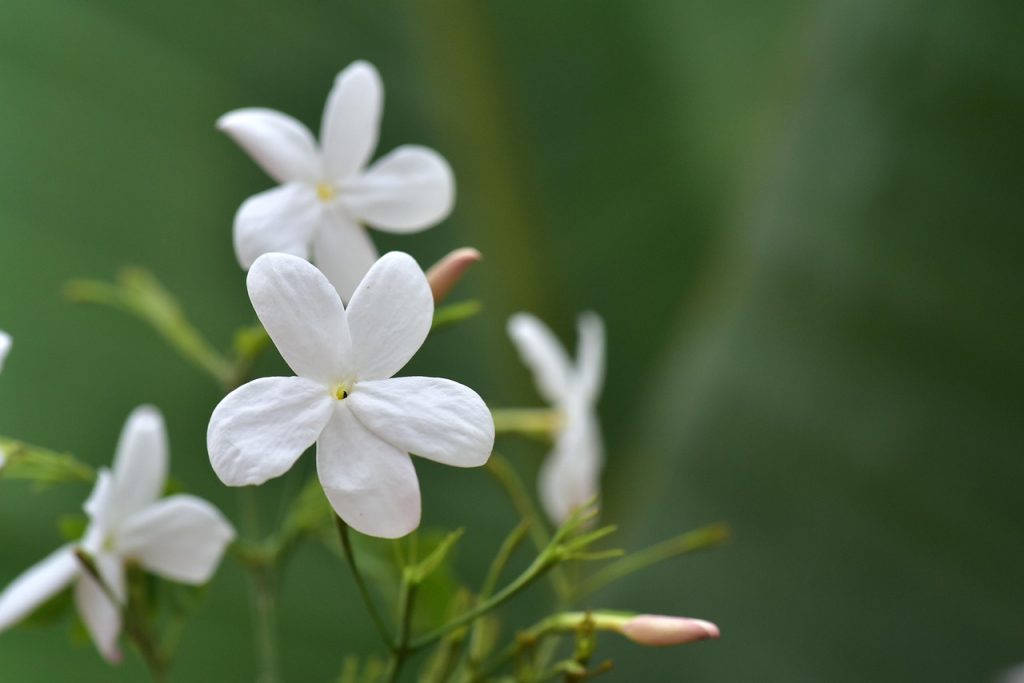Origin of Jasmine, with its intoxicating fragrance and delicate flowers, is a staple in gardens around the world. Known for its climbing abilities and its ability to transform any garden into a romantic oasis, jasmine is a favorite among gardeners and plant enthusiasts alike. This article delves into the unique characteristics of jasmine, its varieties, ideal growing conditions, and how to care for this enchanting plant throughout the seasons.
The Alluring Background and Origin of Jasmine
Jasmine belongs to the Oleaceae family and consists of around 200 species native to tropical and subtropical regions. Jasmine grows most commonly in the warm climates of South Asia and the Middle East, but it also thrives in Europe and Africa. The Persian word yasmin, meaning “gift from God,” gives the plant its name—a fitting origin given its divine fragrance and stunning appearance.

Appearance and Varieties
Jasmine plants vary significantly in size and growth habit, ranging from sprawling shrubs to climbing vines. The leaves can be either evergreen or deciduous, depending on the species. The flowers are typically small, white, or yellow, and are known for their sweet scent. Popular varieties include the Common Jasmine (Jasminum officinale), Star Jasmine (Trachelospermum jasminoides), and Arabian Jasmine (Jasminum sambac), each offering unique attributes suited to different gardening needs.
Ideal Growing Conditions for Jasmine
Jasmine thrives in conditions that replicate its native habitat, requiring specific light, soil, water, and temperature settings to flourish.
Light Requirements
Most Origin of Jasmine varieties prefer full sun to partial shade. Providing at least six hours of sunlight daily ensures robust growth and abundant flowering. However, in particularly hot climates, some afternoon shade can prevent leaf scorch.
Soil Preferences
Jasmine prefers well-draining soil enriched with organic matter. A slightly acidic to neutral pH, around 6.0 to 7.0, is ideal. Amending the soil with compost or well-rotted manure can improve drainage and nutrient content, creating an optimal environment for jasmine roots.
Watering Needs
While jasmine enjoys moist soil, it’s crucial to avoid waterlogged conditions that can lead to root rot. You should water the plant deeply once a week during the growing season, adjusting the frequency based on climate and rainfall patterns.
Temperature Considerations
Jasmine is a warm-weather plant, thriving in temperatures between 60°F to 75°F (15°C to 24°C). It is susceptible to frost, so in cooler climates, it may require protection or indoor overwintering. Some varieties, such as Winter Jasmine (Jasminum nudiflorum), can tolerate colder conditions.
Planting and Propagation of Jasmine
Origin of Jasmine involves selecting a suitable location and preparing the soil to foster healthy growth, while propagation is often accomplished through cuttings.

Planting Jasmine
To plant jasmine, choose a site with adequate sunlight and well-draining soil. Dig a hole twice as wide and just as deep as the root ball, mixing in compost to enrich the soil. Place the plant in the hole, ensuring the top of the root ball is level with the soil surface, and water thoroughly after planting.
Propagating Jasmine
Jasmine is commonly propagated through stem cuttings. In late spring or early summer, select a healthy stem and take a 6-inch cutting just below a node. Remove the lower leaves and dip the cut end in rooting hormone. Plant the cutting in a pot with a mix of sand and peat moss, keeping it moist and warm until roots develop.
Seasonal Care for Jasmine
Jasmine requires specific care throughout the year to maintain its health and vitality, from fertilization to pruning.
Spring and Summer Care
During the growing season, fertilize jasmine every four to six weeks with a balanced, water-soluble fertilizer. Regular watering and mulching help retain moisture and suppress weeds. Pruning after flowering encourages bushier growth and removes dead or weak branches.
Autumn and Winter Maintenance
As temperatures drop, reduce watering to prevent over-saturation. In frost-prone areas, protect jasmine with mulch or bring container-grown plants indoors. Pruning in late winter can prepare the plant for new growth in spring.
Common Problems and Solutions
Jasmine, while generally robust, can be susceptible to pests and diseases. Understanding these challenges and their remedies is crucial for maintaining healthy plants.
Pests
Aphids, spider mites, and whiteflies are common pests that can affect jasmine. Regularly inspect plants and use insecticidal soap or neem oil to control infestations.
Diseases
Fungal infections, such as powdery mildew, can occur in humid conditions. Ensure proper air circulation and avoid overhead watering to minimize risk. Fungicides can be used for severe cases.

Real-Life Uses of Jasmine
Beyond its ornamental value, jasmine has practical uses. Its essential oil is a staple in the fragrance industry, and jasmine tea is a popular beverage known for its calming properties. In traditional medicine, the Origin of Jasmine is used for its purported anti-inflammatory and sedative effects.
Jasmine FAQ
Yes, certain jasmine varieties, such as Arabian Jasmine, can be grown indoors if provided with ample light and humidity.
Jasmine should be watered deeply once a week during the growing season, adjusting for specific climate conditions.
Prune jasmine after flowering or in late winter to encourage new growth and maintain its shape.
While some varieties like Winter Jasmine can tolerate cold, most jasmine plants need protection or indoor shelter in frost-prone areas.